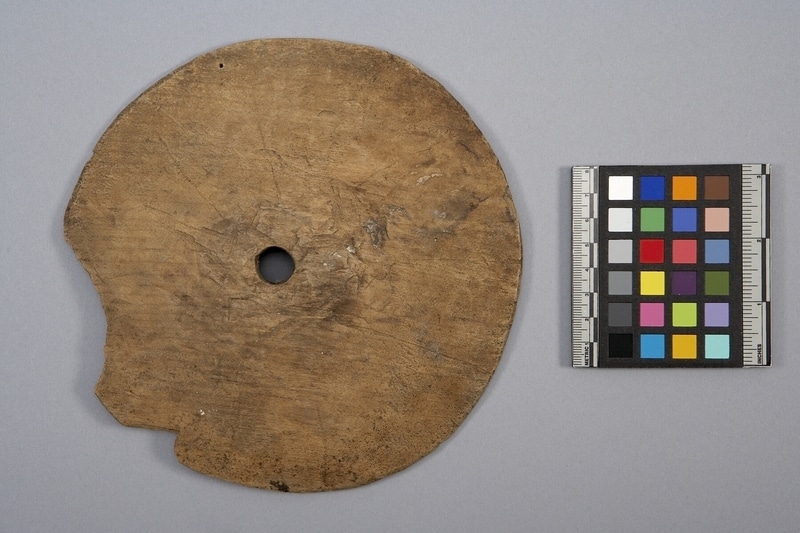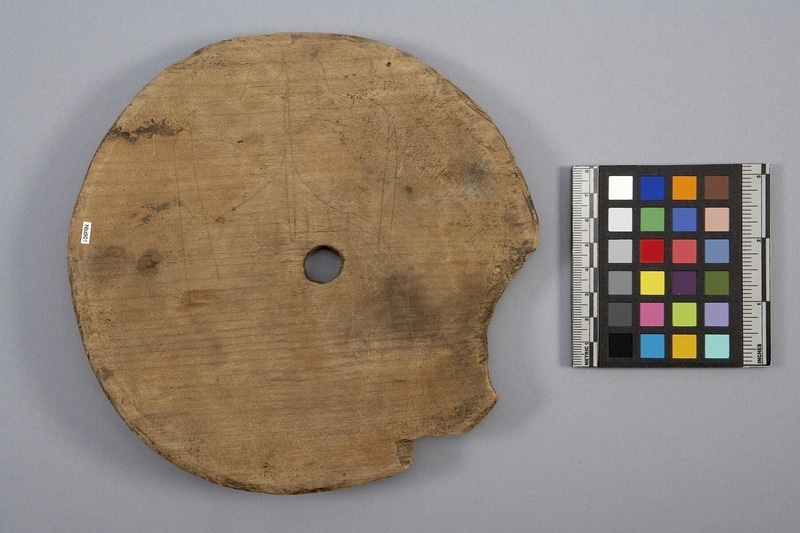Spindle Whorl Item Number: Nbz901 from the MOA: University of British Columbia


Description
Round wooden disc with a hole perforating its center and two fragments missing from its edge. The dorsal surface is slightly concave and has an incised, sylized design, which is unfinished. The ventral surface is convex and the central hole is its highest point. The central hole is slightly off centre. The surface of the wood is rough.
History Of Use
Homer Barnett (1955) notes that spindle whorls used by the southern Coast Salish of British Columbia are larger than those used in the north, with a shaft that is twice as long as the whorl. In the north, fibres were spun on smaller whorls that were "twirled between the leg and palm (1955:118)." By contrast, whorls such as this one were used to spin fibres that were suspended from overhead. This arrangement created a tension in the roving. Johnson and Bernick (1986) report that traditionally several different techniques were used for turning the spindle, however, contemporary weavers now make use of a spinning machine that is similar in appearance to a treadle sewing machine.
Cultural Context
weaving; spinning
Narrative
Purchased by the collector at Koksilah.
Item History
- Made in British Columbia, Canada
- Collected in Koksilah, British Columbia, Canada
- Owned by Thomas R. Richardson before 1998
- Owned by Frances M. Richardson before November 18, 1998
- Received from Frances M. Richardson (Donor) on November 18, 1998
What
- Name
- Spindle Whorl
- Identification Number
- Nbz901
- Type of Item
- spindle whorl
- Material
- wood
- Manufacturing Technique
- incised and carved
- Overall
- height 2.2 cm, diameter 18.7 cm
Who
- Culture
- Coast Salish: Quwutsun'
- Previous Owner
- Thomas R. Richardson and Frances M. Richardson
- Received from
- Frances M. Richardson (Donor)
Where
- Holding Institution
- MOA: University of British Columbia
- Made in
- British Columbia, Canada
- Collected in
- Koksilah, British Columbia, Canada
When
- Ownership Date
- before 1998 and before November 18, 1998
- Acquisition Date
- on November 18, 1998
Other
- Condition
- poor
- Current Location
- Case 2
- Accession Number
- 1768/0046